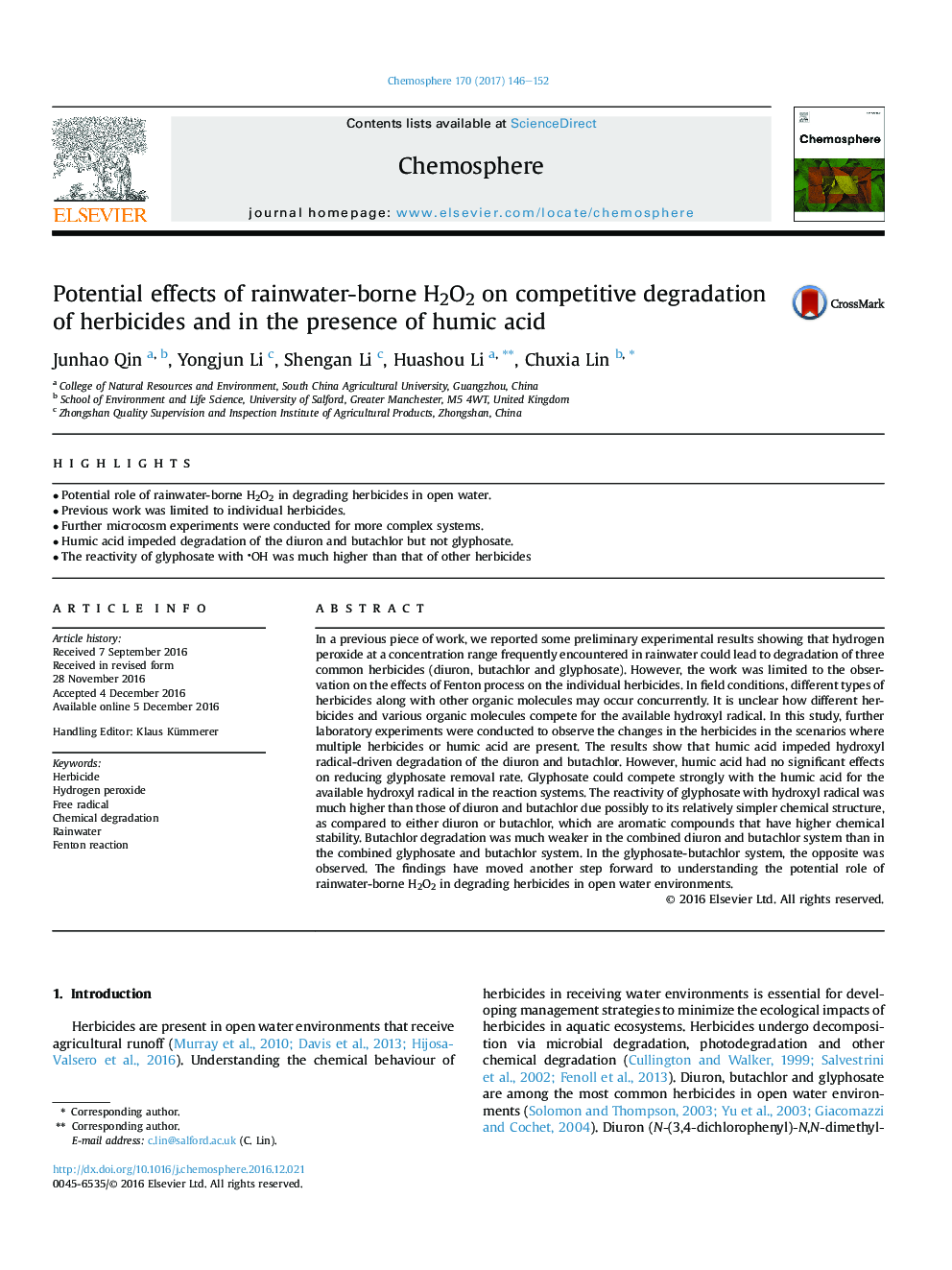| کد مقاله | کد نشریه | سال انتشار | مقاله انگلیسی | نسخه تمام متن |
|---|---|---|---|---|
| 5746796 | 1618801 | 2017 | 7 صفحه PDF | دانلود رایگان |

- Potential role of rainwater-borne H2O2 in degrading herbicides in open water.
- Previous work was limited to individual herbicides.
- Further microcosm experiments were conducted for more complex systems.
- Humic acid impeded degradation of the diuron and butachlor but not glyphosate.
- The reactivity of glyphosate with OH was much higher than that of other herbicides
In a previous piece of work, we reported some preliminary experimental results showing that hydrogen peroxide at a concentration range frequently encountered in rainwater could lead to degradation of three common herbicides (diuron, butachlor and glyphosate). However, the work was limited to the observation on the effects of Fenton process on the individual herbicides. In field conditions, different types of herbicides along with other organic molecules may occur concurrently. It is unclear how different herbicides and various organic molecules compete for the available hydroxyl radical. In this study, further laboratory experiments were conducted to observe the changes in the herbicides in the scenarios where multiple herbicides or humic acid are present. The results show that humic acid impeded hydroxyl radical-driven degradation of the diuron and butachlor. However, humic acid had no significant effects on reducing glyphosate removal rate. Glyphosate could compete strongly with the humic acid for the available hydroxyl radical in the reaction systems. The reactivity of glyphosate with hydroxyl radical was much higher than those of diuron and butachlor due possibly to its relatively simpler chemical structure, as compared to either diuron or butachlor, which are aromatic compounds that have higher chemical stability. Butachlor degradation was much weaker in the combined diuron and butachlor system than in the combined glyphosate and butachlor system. In the glyphosate-butachlor system, the opposite was observed. The findings have moved another step forward to understanding the potential role of rainwater-borne H2O2 in degrading herbicides in open water environments.
Journal: Chemosphere - Volume 170, March 2017, Pages 146-152